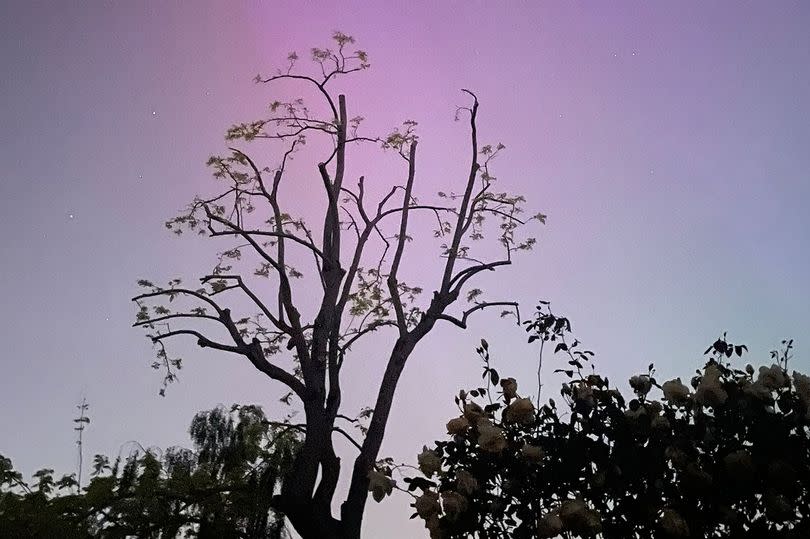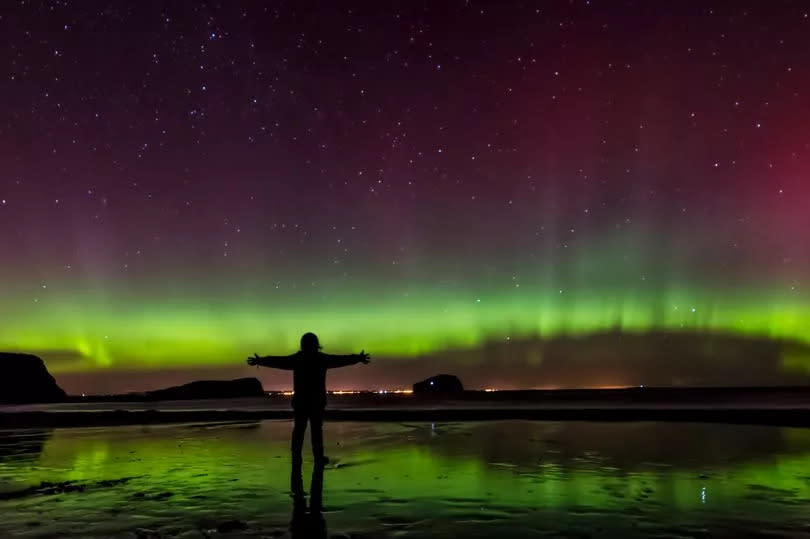Experts issue Northern Lights amber alert for tonight

The UK might be in for a treat as scientists have issued an amber alert for potential Northern Lights sightings across the country. The app Aurorawatch UK has pinged an amber alert due to some intense geomagnetic activity from the Sun.
UPDATE AT 7PM ON FRIDAY, MAY 17: Experts issue Northern Lights red alert with aurora visible across London and UK tonight
If you're keen on catching a glimpse of the aurora borealis, tonight could be your lucky night. According to Aurorawatch UK, there's a good chance it'll be visible with the naked eye in Scotland, northern England, and Northern Ireland, and there's even a possibility it could be seen elsewhere in the UK.
Last Friday, the celestial spectacle was spotted all over the UK, even in London, around midnight. The US National Oceanic and Atmospheric Administration (NOAA) attributed the widespread visibility to an 'extreme' geomagnetic storm that enhanced the lights' brilliance, painting the sky with swathes of pink and green.
UPDATE AT 7PM ON FRIDAY, MAY 17: Experts issue Northern Lights red alert with aurora visible across London and UK tonight
While tonight's display may not be as intense as last weekend's, the Northern Lights are still expected to make an appearance. For the best viewing experience, aim for after 11pm, stretching possibly until about 2am when it gets darker.
For those eager to witness this natural marvel, Chris Snell, a Met Office meteorologist, has some tips. He suggests finding a spot away from street lights and areas heavy with light pollution, reports Wales Online. A quality camera can also help capture the phenomenon.
Chris said: "The best chance you have of seeing the lights is if you are away from street lights and areas with lots of light pollution, as any type of light does have a big effect. Also, at this time of year, we are fighting the shorter length of nights, so it is unlikely that they will be visible until around 10.30pm or 11 o'clock when it gets really dark."
An extreme G5 geomagnetic storm, the most severe kind of solar storm, struck Earth last Thursday. The National Oceanic and Atmospheric Administration (NOAA) attributed the disturbance to a 'large, complex' sunspot cluster that was 17 times the size of Earth.
It's been over two decades since a G5-level storm last hit the Earth, back in October 2003, which led to power cuts across Sweden, as Professor Carole Haswell recounted on BBC Radio 4 Today Programme this Saturday morning.

Prof Haswell, who leads the astronomy department at the Open University, warned: "A lot of the satellites communicate using radio signals and all of these charged particles speeding around disrupt radio signals, particularly GPS which is used by planes can be disrupted so it can cause navigation problems, it can cause outages with satellites, it can bring down power systems. The last big G5 storm caused a power outage in Sweden and I haven't heard of anything happening this time yet, so hopefully people have designed in sort of redundancies into their systems so that they can actually weather this sort of space weather."
A spokesperson for the Energy Networks Association told the PA news agency they had been monitoring the solar storm and said that the UK's electricity network continued to operate as normal on Saturday morning. Prof Haswell also explained how different colours within the aurora are formed and said: "Green comes from oxygen which is about 80 to 250 miles above the earth's surface."
"The purple, blue and pink comes from nitrogen and when you get a very strong aurora sometimes you see a sort of scarlet red, and that comes from oxygen which is higher in the earth's atmosphere, at an altitude of about 180 miles."
Aurora displays occur when charged particles collide with gases in the Earth's atmosphere around the magnetic poles. In the northern hemisphere, most of this activity takes place within a band known as the aurora oval, covering latitudes between 60 and 75 degrees.
When activity is strong, this expands to cover a greater area which explains why displays can be occasionally seen as far south as the UK.

 Yahoo News
Yahoo News 
